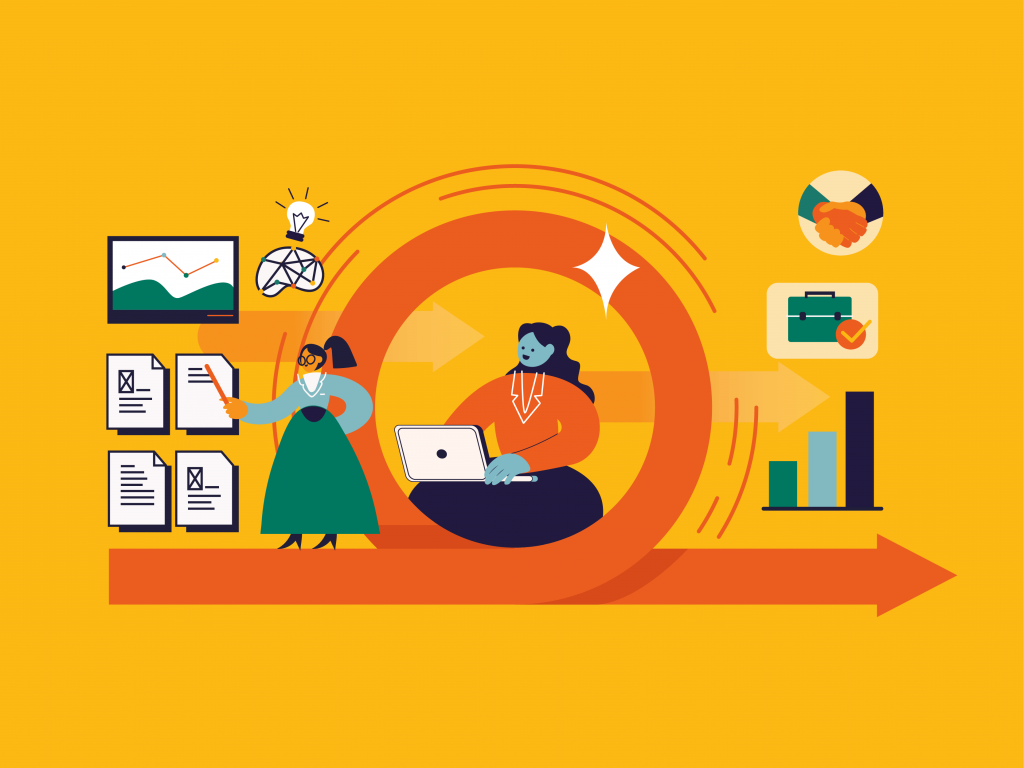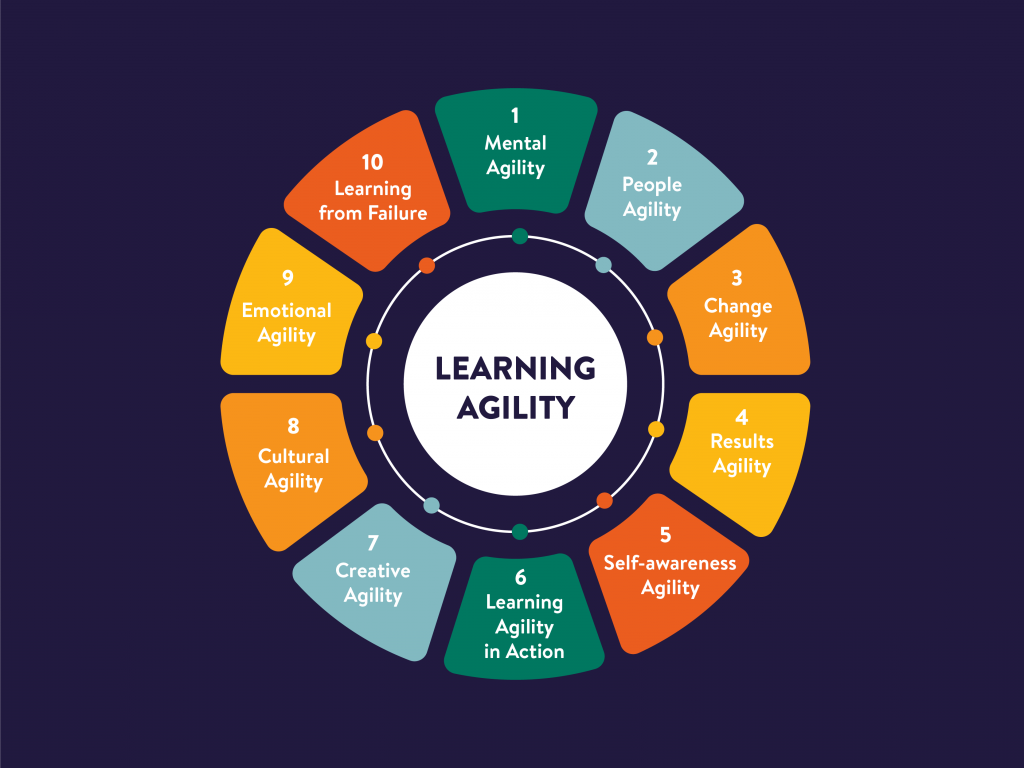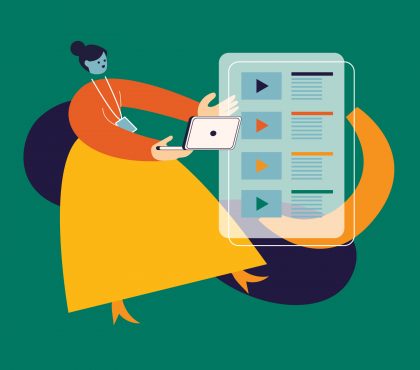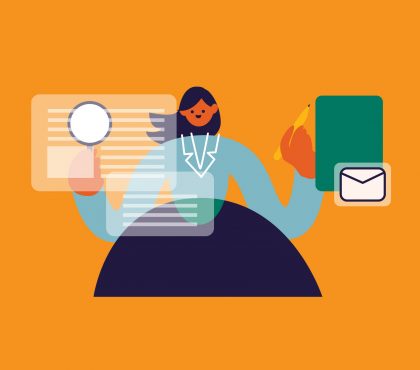In a rapidly changing world where new technologies emerge, industries evolve, and societal demands shift, the ability to learn, adapt, and thrive has become more crucial than ever. Enter learning agility – a transformative concept that empowers individuals to embrace lifelong learning and continuously develop their skills, knowledge, and mindset.
This Learning Agility 101 guide will dive into learning agility’s core principles and practical applications. From understanding the different facets of learning agility to exploring real-life examples of its impact, this comprehensive guide aims to equip you with the knowledge and tools to become a learning agile individual.
What is learning agility?
Learning agility is an innovative education and professional development approach that embraces flexibility, adaptability, and collaboration. Inspired by the principles of Agile software development, learning agility emphasizes iterative and incremental progress, continuous feedback, and a learner-centric approach to knowledge acquisition and skill development.

In traditional education, learning is often structured around rigid curricula and predetermined timelines. Learning agility, however, seeks to break away from the one-size-fits-all model and instead focuses on catering to individual needs and learning preferences. It encourages learners to actively engage in learning, taking ownership of their education and driving their progress.
At its core, learning agility is guided by the Agile Manifesto, a set of values and principles that emerged in the software development industry in the early 2000s. While initially formulated for software development, these principles have since been adapted and applied to various fields, including education.
Learning Agility examples
Learning agility is a versatile skill that manifests in various real-life situations. Individuals who demonstrate learning agility can quickly grasp new concepts, adapt to unfamiliar environments, and apply their knowledge effectively. Here are some practical examples of learning agility in action:
#1 Starting a New Job:
When starting a new job in an unfamiliar industry, a learning agile individual will proactively seek to understand the company culture, learn about the industry’s nuances, and quickly adapt to the role’s demands. They actively absorb information from colleagues, ask questions, and apply their existing skills to contribute effectively from the beginning.
#2 Cross-Functional Collaboration:
Learning agile professionals excel in cross-functional collaboration. When working on a project with colleagues from different departments or disciplines, they quickly understand each team member’s unique perspectives and expertise. They adjust their communication style to build strong relationships and ensure effective teamwork.
#3 Embracing Digital Tools:
In today’s digital age, learning agile individuals quickly adapt to new technologies and software. They willingly explore and master new digital tools, making their workflows more efficient and staying up-to-date with the latest advancements.
Look at how F.Learning Studio harnesses the power of animation to create dynamic, effective, and engaging training videos for their client. By seamlessly integrating animation into its training content, the studio redefines the learning experience, making it more accessible, comprehensible, and enjoyable for learners across various industries.
10 Types of learning agility

Learning agility is a multifaceted concept that encompasses various types of learning abilities. It refers to an individual’s capacity to learn from new experiences quickly, adapt to changing situations, and apply that learning to succeed in different contexts. There are several types of learning agility, each contributing to an individual’s overall ability to thrive in a dynamic and uncertain world. Here are some key types of learning agility.
#1. Mental Agility:
Mental agility refers to thinking critically, analysing information, and solving complex problems quickly. Individuals with strong mental agility can process new information efficiently, identify patterns, and make well-informed decisions in rapidly changing situations.
#2. People Agility:
People agility focuses on an individual’s ability to interact effectively with others and build positive relationships. People agile individuals possess strong interpersonal skills, empathy, and the capacity to work collaboratively with diverse groups. They can adapt their communication styles to connect with and influence different people.
#3. Change Agility:
Change agility is embracing and adapting to changes positively and proactively. Individuals with high change agility are flexible and resilient, responding effectively to unexpected shifts and challenges.
#4. Results Agility:
Results agility centres on achieving goals and producing tangible outcomes in diverse situations. Individuals with solid results agility are driven, resourceful, and adept at aligning their efforts with organisational or personal objectives.
#5. Self-awareness Agility:
Self-awareness agility involves understanding one’s strengths, weaknesses, and learning preferences. Individuals with self-awareness agility can identify areas for improvement, seek feedback, and adjust their learning approaches accordingly.
#6. Learning Agility in Action:
This type of learning agility focuses on applying knowledge and skills effectively in real-world scenarios. Individuals with strong learning agility can transfer their learning to practical situations and adapt their strategies based on the specific context.
#7. Creative Agility:
Creative agility entails thinking innovatively and developing new ideas and solutions. Individuals with creative skills can approach challenges with originality and explore unconventional approaches to problem-solving.
#8. Cultural Agility:
Cultural agility refers to navigating and working effectively in diverse cultural settings. It involves understanding and respecting different cultural norms, values, and practices to collaborate successfully across borders and cultures.
#9. Emotional Agility:
Emotional agility involves managing and harnessing one’s emotions to navigate challenges and foster positive relationships. Individuals with emotional agility can control their emotional responses, show empathy, and build constructive interactions with others.
#10. Learning from Failure:
This type of learning agility is about recognizing failure as an opportunity for growth and learning. Individuals with a solid ability to learn from failure can analyze their mistakes, extract valuable insights, and apply those lessons to future endeavors.
5 Key principles of learning agility
#1. Iterative and Incremental Approach:
Learning agility divides the learning process into smaller, manageable chunks or iterations. Learners make regular progress by completing these iterations, allowing them to see tangible results and improvements over time.
#2. Collaboration and Communication:
Learning agility emphasizes teamwork and effective communication among learners, educators, and other stakeholders. Collaboration fosters community and mutual support, enabling learners to share ideas, knowledge, and experiences.
#3. Continuous Feedback and Improvement:
Regular feedback is a fundamental aspect of learning agility. Learners receive ongoing input from educators, peers, or self-assessment tools to identify areas for improvement. They use this feedback to make necessary adjustments and enhance their learning outcomes continually.
#4. Flexibility and Adaptability:
Learning agility acknowledges that the learning journey may deviate from the initial plan due to changing circumstances or emerging opportunities. Learners and educators remain open to adapting and adjusting the learning process to suit evolving needs and goals.
#5. Customer-Centric Focus:
In learning agility, the learner is considered the “customer” who receives a personalized learning experience. This customer-centric approach aims to meet individual learning needs and preferences effectively.
Learning agility can be applied in various educational settings, from traditional schools and universities to corporate training and online learning platforms. It aligns well with modern demands for lifelong learning, where individuals must continuously update their skills and knowledge to keep up with rapidly changing technologies and industries.
By embracing learning agility principles, educational institutions and learners can create dynamic, responsive learning environments that foster creativity, critical thinking, and adaptability—essential for success in the fast-paced and ever-evolving world.
Importance of learning agility in the Modern World
The modern world is characterized by rapid technological advancements, constantly evolving industries and ever-changing societal needs. In such a dynamic landscape, traditional rigid learning models may need help to keep up with the demands of the 21st century. Learning agility emerges as a vital approach to education and professional development, offering several significant advantages that align with the needs of the modern world.
#1. Adapting to Technological Advancements:
Technology is transforming various aspects of our lives, including how we work, communicate, and learn. learning agility allows educational institutions and learners to integrate new technologies effectively, ensuring that education remains relevant and up-to-date with the latest innovations.
#2. Lifelong Learning and Skill Development:
In today’s knowledge-driven economy, the concept of lifelong learning is crucial. Learning agility promotes a mindset of continuous improvement, encouraging individuals to acquire new skills and knowledge throughout their lives. It enables professionals to stay relevant and adapt to emerging job roles.
#3. Meeting Changing Industry Demands:
Industries and job markets are evolving rapidly, creating a demand for workers with versatile skill sets. Learning agility equips learners to acquire new skills quickly, respond to industry demands, and remain employable amid economic and technological shifts.
#4. Enhancing Critical Thinking and Problem-Solving:
Learning agility emphasises learner engagement and active participation. Learners are encouraged to think critically, solve problems collaboratively, and apply their knowledge in real-world scenarios. This fosters a deeper understanding of concepts and enhances practical skills, making learners better equipped to tackle complex challenges.
#5. Personalised Learning Experiences:
Each individual has unique learning preferences and strengths. Learning agility recognises this diversity and offers personalised learning experiences. Learners can tailor their educational paths, focus on areas of interest, and progress at their own pace, leading to a more fulfilling and practical learning journey.
#6. Embracing Flexibility and Resilience:
The modern world is marked by uncertainty and change. Learning agility cultivates resilience by teaching learners to adapt to unexpected challenges and opportunities. This adaptability is a valuable skill for navigating an unpredictable future.
#7. Nurturing Creativity and Innovation:
Learning agility environments encourage creativity and innovation. Learners are free to explore and experiment, enabling them to develop novel solutions and ideas. This creativity is essential for driving progress and advancing society.
#8. Empowering Learners and Building Confidence:
Learning agility empowers learners by involving them in decision-making and valuing their contributions. As learners take ownership of their education, they develop confidence and self-efficacy, positively impacting their motivation and learning outcomes.
#9. Collaboration and Communication Skills:
Learning agility emphasizes collaboration among learners, educators, and industry professionals. This collaborative approach enhances communication skills and nurtures a supportive learning community, mirroring the collaborative nature of many modern work environments.
#10. Fostering Continuous Improvement:
Learning agility strongly emphasizes continuous improvement through regular feedback and iterative learning cycles. This commitment to growth ensures that educational practices evolve in response to new research and best practices, leading to more effective teaching and learning methodologies.
Final words
In a constantly evolving world, where change is the only constant, learning agility emerges as a beacon of empowerment. Learning agility is not just a skill; it’s a mindset, a philosophy that encourages individuals to view challenges as opportunities, embrace uncertainty with curiosity, and approach growth enthusiastically.




